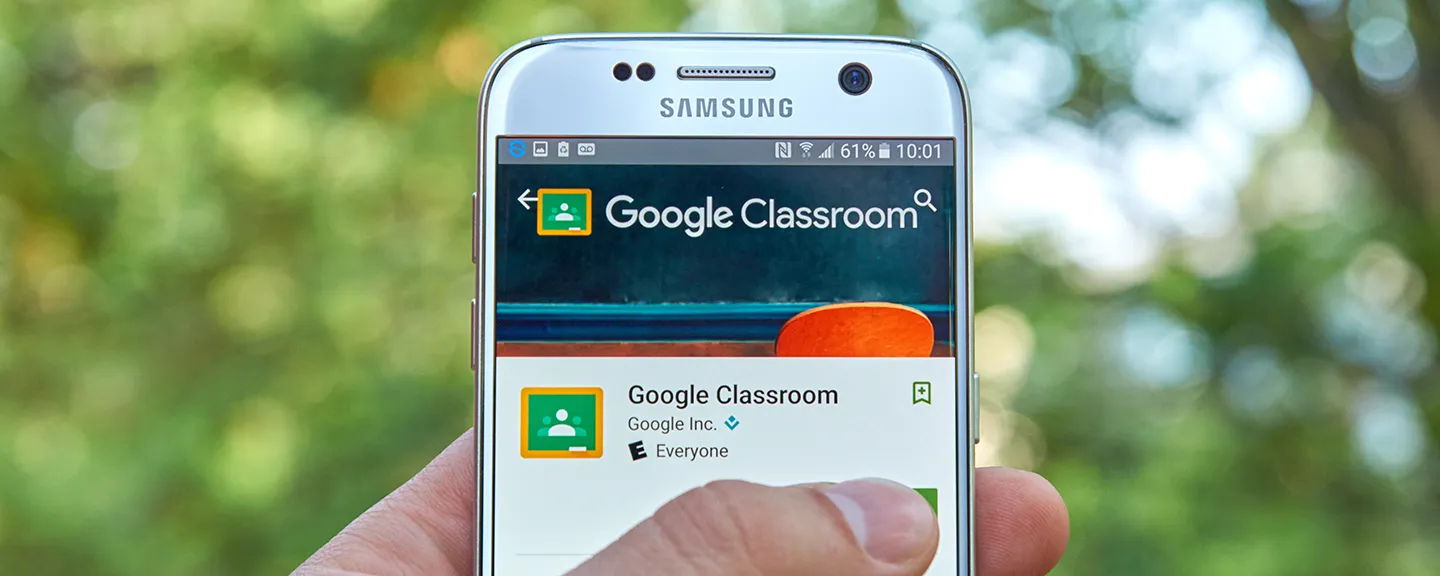- Home
- >
- APU Articles
- >
- News Article
6 Tips for Teaching Online from an Ed Tech Expert
April 29, 2020 | Written By Anna Cayot ’20 and Evelyn Allen, M.S. ’19

Kathleen Fletcher-Bacer, EdD, chairs the Department of Advanced Studies in Azusa Pacific University’s School of Education.
Fletcher-Bacer has been helping APU faculty shift to online teaching and continues to teach educational technology graduate students and undergraduates. These are some of the top strategies she is sharing right now with K-12 educators.
1. Keep Things as Simple as Possible
Fletcher-Bacer cautions teachers against creating a bunch of new course activities and assignments. “We already live in a functional digital world with a ton of online interactive curriculum,” she says. “Use that to your advantage.”
Prioritize your upcoming units and decide what will fit well in an online modality. Also, keep in mind what is happening in your students’ homes that aligns with the learning expectations at their grade level. “For example, students are already going to be doing art on the sidewalks,” Fletcher-Bacer says. “They will be baking and practicing measurements with their parents.” Those can be natural, cohesive learning experiences.
“By keeping things as simple as possible, technology is no longer a barrier,” she says. “Technology can then be the vehicle to connect, to engage, and to sustain learning through the rest of the year.”
2. Embrace the Technology You Have
There are countless enticing tech tools available to teachers today, which can feel overwhelming. You’re free to explore any technology that may support your curriculum needs, but Fletcher-Bacer recommends first getting familiar with the ins and outs of the primary learning management system (LMS) your school provides, such as Canvas, Moodle, Google Classroom, or ClassDojo. Most likely, your LMS can do nearly everything you need—and it’s a skill that will be useful well into the future.
“Embrace whatever your school sent you home with so you can use it to do what you do best—teaching,” Fletcher-Bacer says.
3. Create Manageable Learning Groups
One challenge of online teaching is the lack of definition in the day—no bells to remind you when a period is ending and the potential to get absorbed in your work with too few breaks.
A time-saving organizational method is to put students into manageable groups that are learning at the same level, just like you did in the physical classroom. Then, set up times to meet with those groups. Not only will students get to interact with you more often but you’ll be able to break down your day into functional blocks.
4. Strive for a Personal Connection
Your virtual presence is perhaps the most valuable thing you can offer students. “The best thing you can do is stay present and stay connected,” Fletcher-Bacer says. “They need to see you.” And there are many ways teachers can create a personal connection online, including:
- Developing the content and structure of your LMS. Your personality and voice can shine through in the classroom portal your students visit every day.
- Using a synchronous meeting tool. Connect with students in real-time and allow them to see their fellow classmates all together.
- Setting up virtual meetings with groups or individuals. Go deeper with small groups of students or individuals, if possible, for discussions that can be tailored to students’ strengths.
- Recording yourself and posting the video. This can be a fun way to deliver a message to your class about an assignment, goal, or simply a word of encouragement.
5. Leave Behind What Doesn’t Work
Not everything you had planned will adapt well in the digital classroom. Teachers and families already recognize that the home learning environment is not a direct substitute for students’ typical school experiences. That’s why Fletcher-Bacer recommends a streamlined approach and leaving room to let things go.
“Some things aren’t going to work,” she says. “We’re in a really different time right now, and you’ve got to decide what skills are essential and which ones are not. Keep it doable.”
6. Trust Your Teacher Instincts
You know your students best. Remember what you already understand about their strengths and challenges and the goals you have for them. By applying your creativity, you can redesign your instruction to fit this moment in time.
“Extend yourself and your students some grace, because we are all navigating this together,” Fletcher-Bacer says. “Let technology allow for that flexibility.”
Advancements in technology have already significantly shaped K-12 school environments, and this historic period of remote learning is certain to leave a long-term imprint on the future of education.